Range Rover SV review: Range topper
The flagship of the flagship, the SV dips its lambswool-lined Wellingtons into ultra-luxury SUV waters.
Published on Jun 23, 2023 03:38:00 PM
50,718 Views
Follow us on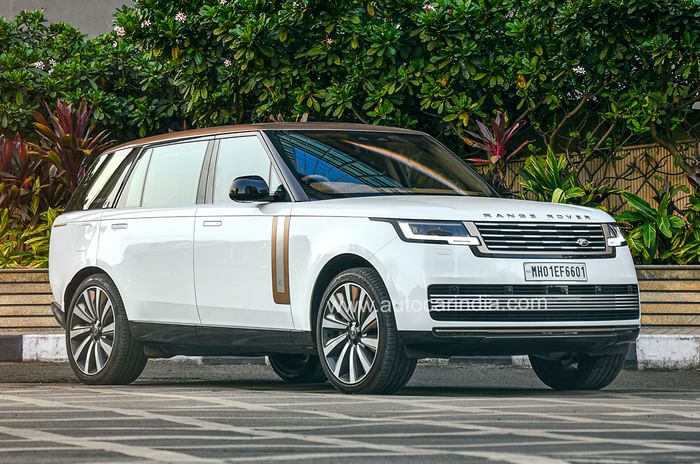
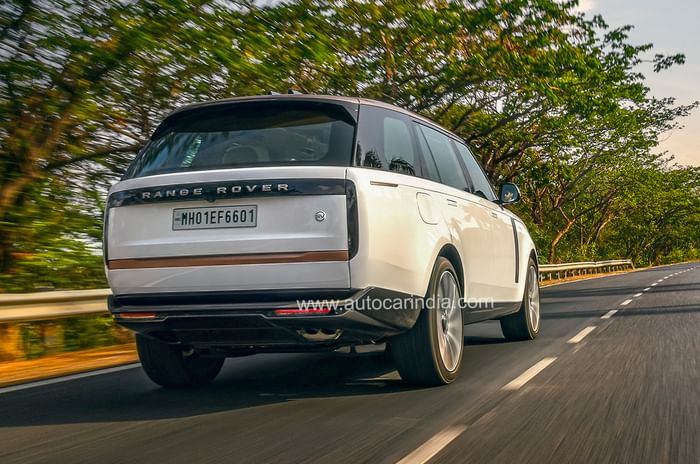
We Like
- Leviathan road presence
- Acres of cabin space
- Surprisingly easy to drive
We Don't Like
- Exorbitant price
- Cabin trim creaks audibly
- Too much is still optional
For a few solid decades, the Range Rover was a truly unique proposition, mixing top-tier luxury with robust off-roading mechanicals in a way no other SUV could. More recently though, the luxury SUV game has picked up, with Bentley, Rolls-Royce and Maybach having entered the fray and raising the posh quotient, but Range Rover has more than kept up, with each successive generation getting more and more opulent. The latest model was already plenty luxurious, but now they’ve decided to crown the line-up with a model simply called the SV. This product of JLR’s Special Vehicle Operations (SVO) department sits above the Autobiography trim and costs a whopping Rs 85 lakh more. Could it really be worth that sort of premium?
Range Rover SV features
There are many ways to look at this, and one of them is the kind of features you’ll find in a Range Rover SV. With a model range as vast and extravagant as the Range Rover itself (there are 50 variants to choose from), it took a lot of research, but there are a few things that are different. 13.1-inch rear entertainment touchscreens are standard on the SV, while all lesser models only get 11.4-inch screens, as options.
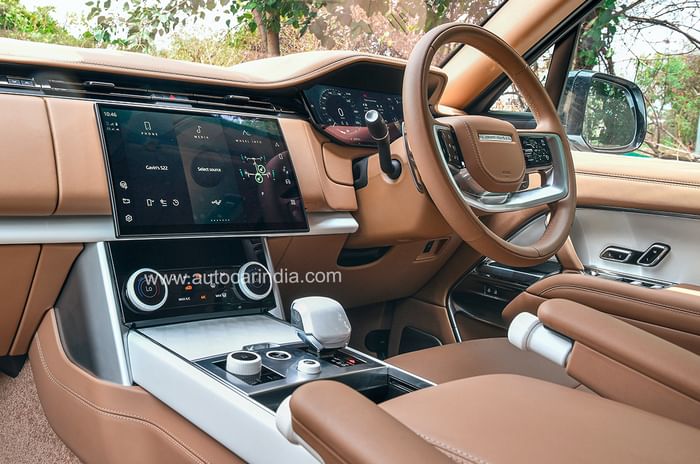
You then get other features as standard on the SV that are optional on the Autobiography trim, like digital LED headlamps and a refrigerator between the front seats. Then come loads of features that are optional here – but also optional on the Autobiography – like a fixed or sliding panoramic glass roof, ‘Ultrafabric’ environmentally conscious leather-free upholstery, a powered tailgate, and the ‘tailgate event suite’ (a rear-facing picnic bench in the boot).
| Land Rover Range Rover Price, Mileage, Specifications, Features and Variants | |
|---|---|
| Brand | Land Rover |
| Model Name | Range Rover |
| Land Rover Range Rover Price | ₹ 2.83 - 5.26 crore |
| Land Rover Range Rover Range/Mileage | NA |
| Land Rover Range Rover Specifications | SUV | 5 doors | 7 seats View All Specs |
| Land Rover Range Rover Features | LED headlight | 13.1-inch Touchscreen display | 9 airbags View All Features |
| Land Rover Range Rover Variants | Diesel 3.0 D350 LWB HSE 5 Seat | Petrol 3.0 P400 LWB Autobiography 5 Seat | Diesel 3.0 D350 LWB HSE 7 Seat View All Variants |
There are, of course, some impressive features that are standard on both SV and the Autobiography trims, like the extended leather package and the 1,600W, 32-speaker Meridian Signature sound system. But the real difference comes in the new options that you can add exclusively on the SV. These include the rear refrigerator, a carbon-fibre engine cover, and a host of options for the rear seats, as you’ll soon see.
Range Rover SV interior
The Range Rover SV, especially in this long-wheelbase guise, is essentially a high-riding limousine, so it makes sense that the lion’s share of personalisation can be found in the rear seats. For instance, while the Autobiography gets the option of reclining ‘Executive’ rear seats, the SV goes two steps further. ‘Executive Comfort Plus’ rear seats are standard, which essentially gives the bench seat recline, memory settings, heating, cooling, massage functions and some handy throw cushions for good measure. But you can then, exclusively, upgrade to the SV Signature Suite, which bisects the cabin with a fixed centre console that contains motorised aluminium cup holders (yes, you read that correctly), and a motorised fold-out table.
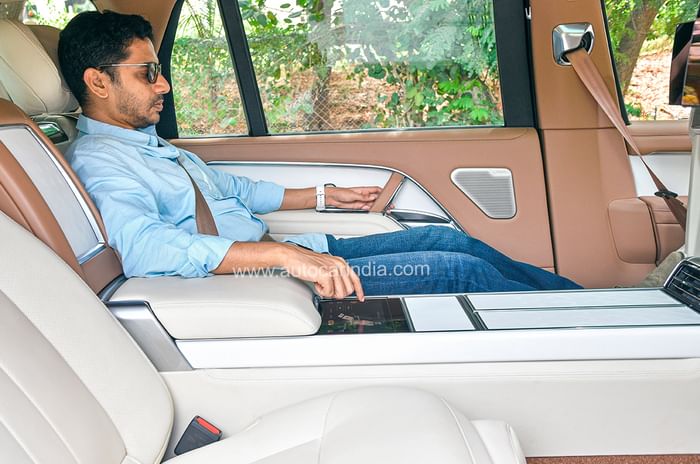
Additionally, the SV lets you specify one of two special interior design themes – SV Intrepid (dark) and SV Serenity (light) – which give the cabin a two-tone contrast colour scheme, and unlocks a new set of leather colours and trim materials, not to mention ceramic in place of metallic trim in certain places. It essentially opens up the customisation possibilities even beyond the already vast catalogue available with the Autobiography, which is what customers look for at this upper end of the luxury ladder.
Space, as always with the LWB Range Rover, is vast, and for the first time in any vehicle, my feet weren’t able to reach the front passenger seat when it was fully folded forward. The seat doesn’t recline quite as much as in a Maybach S-class – likely a limitation of the SUV body shape – but what you get instead is a view out that towers over lesser vehicles, even when you’re laid back. There are fold-out ottomans of course, and with the Signature Suite, it really does feel like you’re in your own private jet.
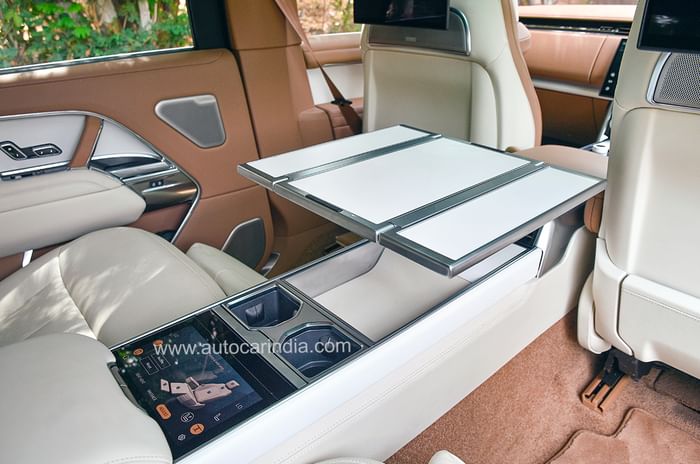
The 725-litre boot is vast too, should you have a lot of weekend luggage, with the large spare wheel not intruding in the slightest. You can, of course, lower the SUV to ‘access height’ on its air springs to lift your luggage over the split tailgate, or better still, to hop onto the optional fold-out ‘event suite’ bench to enjoy a picnic, with your favourite music piping through the dedicated speakers above.
Range Rover SV exterior design
There are very few exterior differentiators from the lesser Range Rovers, until you start personalising your SV, and they’re so subtle you’d have to be a JLR product specialist to identify them. The Land Rover badge up front is now black instead of green, while the one at the back has been replaced by an SV badge finished in white ceramic. The grille has a slightly different slat pattern, while the lower air dam has five horizontal slats, and no longer houses any fog lamps.
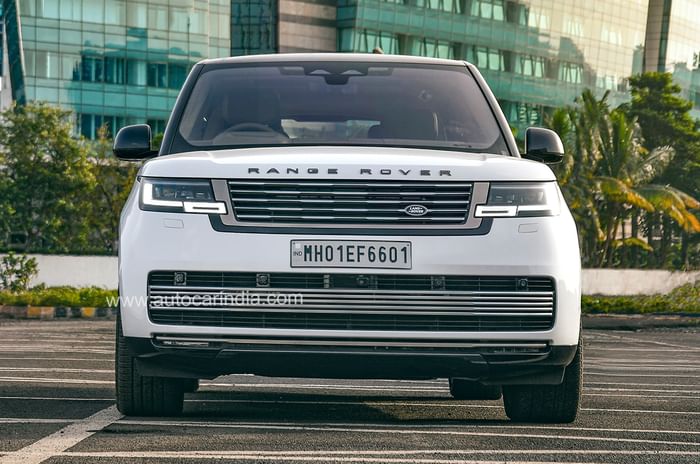
Over to the sides, the default wheel size remains 22 inches (the same as the Autobiography), but the default design is different, and while the signature vertical ‘slat’ elements on the front doors remain, the middle portion is now coloured in bronze and has an SV logo at the base. Finally, the ‘Range Rover’ lettering on the nose and tail are both finished in a darker shade, as opposed to brushed silver.
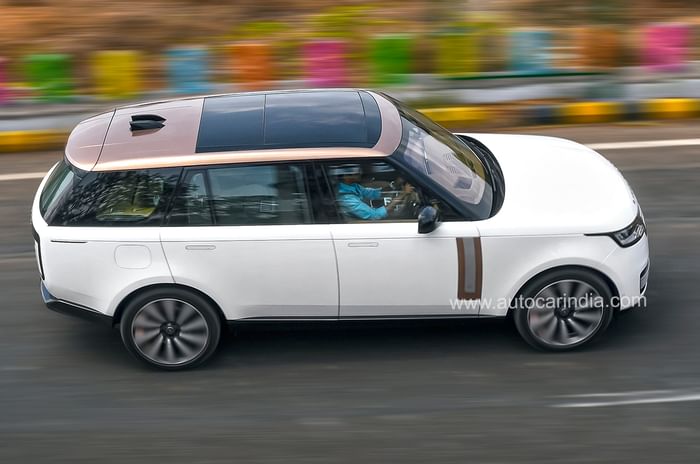
A lot of this could change if you choose one of the two optional SV exterior design themes, which again, you cannot specify on any lesser model. The SV Intrepid theme is essentially a ‘black pack’, while the SV Serenity adds bronze accents all over the bodywork. After you’ve optioned either pack, you can further specify matching wheels and contrast roof, but it’s worth noting that these are all separate options.
Range Rover SV ride and handling
The Range Rover SV rides impeccably, and that’s a huge achievement. Unlike low-riding sedan-based limousines, the added height and masses at work (it weighs 2.6 tonnes) in such a big SUV (it’s 5,258mm long) make delivering ultra-luxury ride comfort even more challenging. This was something of a problem with the previous-gen Range Rover, but one that has been greatly rectified in this car, thanks to the new 5-link rear suspension. Ride quality is impressively controlled, given the 3.1-metre wheelbase and air springs, and you aren’t bounced around too much on a bumpy or undulating road. It’s hard to get around the huge 23-inch rims and 285/40 R23 tyres, and these can ‘thump’ on sharp-edged bumps, and cause a bit of side-to-side movement. What is more of a bother than this, however, is that some interior trim, particularly at the rear, creaks audibly when this happens, disrupting an otherwise serene experience.
Manoeuvrability is also seriously impressive for this size of vehicle. Sure, a lot of this can be credited to the Range Rover’s inherently tall ‘Command’ driving position and low sills which give a superb view out, but the rear-wheel steering and heavily assisted power steering are what really save the day. Also lending a hand is the crisp imagery from the surround cameras on the clear Pivi Pro screen. It’s telling that it took me less time to get comfortable behind its wheel than a much smaller SUV (with a ‘sportier’ driving position) I drove the same day. The steering ratio is just right, too, being not too quick, nor too slow, letting you change direction confidently, and without fear of causing a topple. It’s no handler, of course, but for its intended use of crawling through traffic, charging down an expressway or maybe navigating the occasional country road, it’s superb. In fact, you have to remind yourself of its size, but then again, you don’t have to wince over speed bumps like you would in a conventional limousine.
Range Rover SV engine and performance
Although available with the lesser six-cylinder petrol and diesel engines, as well as the newly introduced plug-in hybrid powertrain, if you’re splurging on an SV, the V8 seems the only fitting choice. JLR is in the process of retiring its long-running 5.0-litre supercharged ‘AJ’ V8 (you’ll still find it in the Defender and a couple of Jags), and is moving back to BMW V8 power. The engine in question is the 4.4-litre twin-turbo V8 that features in many top-rung BMWs, and in this car, it makes 530hp and 750Nm. However, for all future MY2024 Range Rovers, this engine will get a mild hybrid system, with a power bump to 615hp.
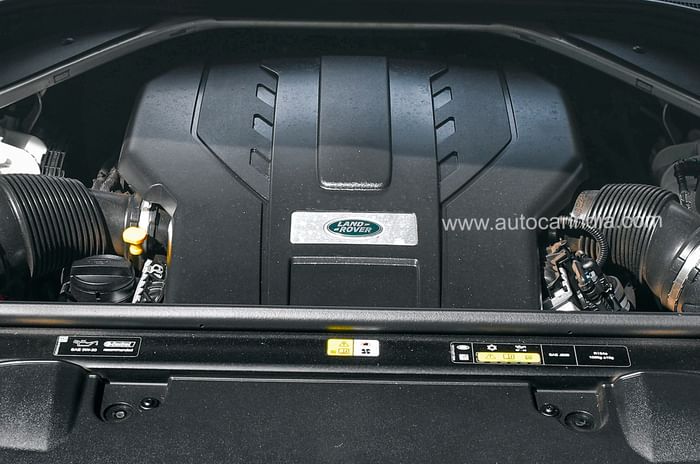
The purpose of choosing the V8 is not outright performance, though, with a claimed 0-100kph time of 4.7sec, it’s no slouch. It’s the refined effortlessness that it delivers, and which is comparable to other super-luxury SUVs that use similarly large-capacity forced-induction petrol engines. Should you be reckless enough to floor it, there’s very little suspension squat, and you’re whisked ahead gamely with but a mild grumble from somewhere in the distance. The eight-speed auto gearbox can fumble a bit at low speeds and drop you into a pit of turbo lag, which given the mass being moved, can produce some stutters and suspension rocking. And speaking of mass being moved, when it comes to reining all that power and weight in, the brakes could have done with a bit more bite, given the forces at work here.
Range Rover SV price and verdict
Rs 4.17 crore, ex-showroom, before options, is Bentley money, and as mentioned above, Rs 85 lakh more than the already superb Autobiography trim. What’s more, quite a few of the optional extras can be added to the Autobiography as well, not to mention the same V8 engine and long-wheelbase configuration. The difference lies in the ones that cannot, and the unique SV exterior and interior options, plus that superb split rear cabin, are what make your SV special, with a total of 1.6 million possible configurations, says JLR. That said, colours and trims notwithstanding, this will still look no different to any other Range Rover, and in its effort to give owners the maximum amount of choice, perhaps it’s sacrificed a bit of individuality.
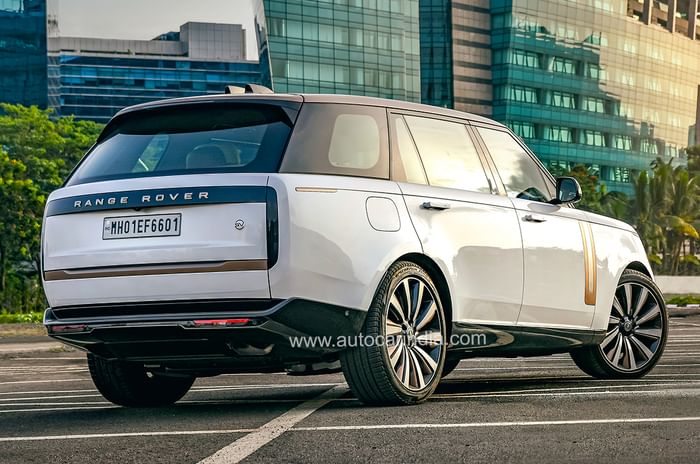
There is a case for the SV though, and one that can only be made at this pointy end of the segment, above even the already decadent ‘lesser’ Range Rovers. There will always be those buyers who will accept no compromise, and would choose nothing less than an SV – the absolute pinnacle of what Range Rover, and indeed JLR, can offer. However, if you aren’t in this camp, an Autobiography will more than suffice, and simply makes more sense.
Tech Specs 
Copyright (c) Autocar India. All rights reserved.


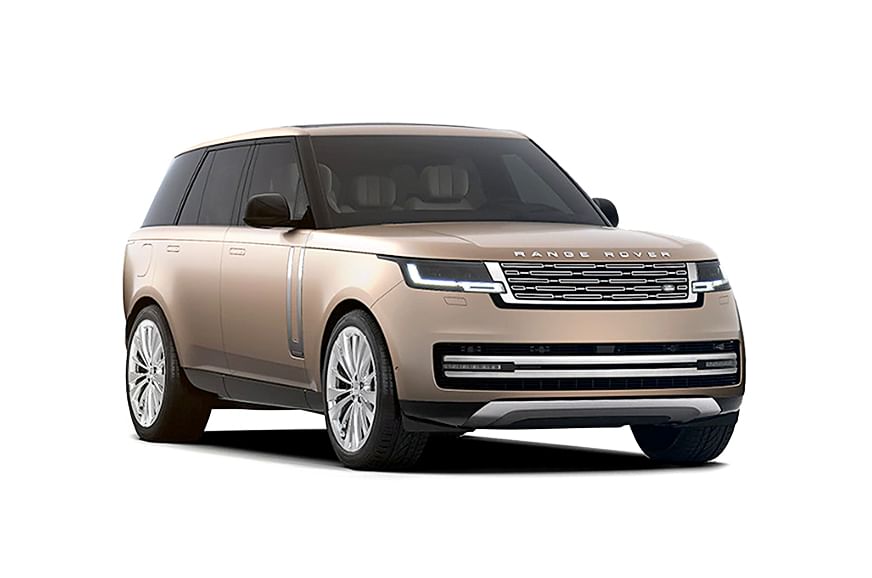
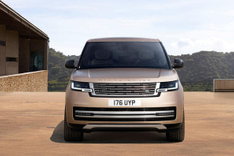

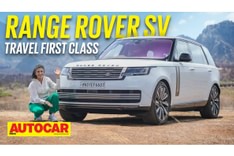


 Engine
Engine Transmission
Transmission Body
Body Brakes
Brakes Dimensions
Dimensions
Comments
Member Login
Personal Details
No comments yet. Be the first to comment.